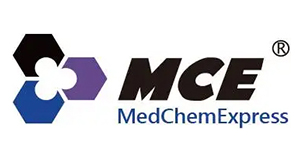Reprogramming Compound Library
Reprogramming Compound Library
SKU
MEXHY-L039-30
Packaging Unit
30 μl
Manufacturer
MedChemExpress
Availability:
loading...
Price is loading...
Description: Techniques for reprogramming somatic cells create new opportunities for drug screening, disease modeling, artificial organ development, and cell therapy. The development of reprogramming techniques has grown exponentially since Yamanaka reprogrammed somatic cells to become induced pluripotent stem cells (iPSCs) using four transcription factors, OCT4, SOX2, KLF4, and c-MYC in 2006. Despite the development of efficient reprogramming methods, most methods are inappropriate for clinical applications because they carry the risk of integrating exogenous genetic factors or use oncogenes. Alternative approaches, such as those based on miRNA, non-viral genes, non-integrative vectors, and small molecules, have been studied as possible solutions to the problems. Among these alternatives, small molecules are attractive options for clinical applications. Reprogramming using small molecules is inexpensive and easy to control in a concentration- and time-dependent manner. It offers a high level of cell permeability, ease of synthesis and standardization, and it is appropriate for mass-producing cells.
Techniques for reprogramming somatic cells create new opportunities for drug screening, disease modeling, artificial organ development, and cell therapy. The development of reprogramming techniques has grown exponentially since Yamanaka reprogrammed somatic cells to become induced pluripotent stem cells (iPSCs) using four transcription factors, OCT4, SOX2, KLF4, and c-MYC in 2006. Despite the development of efficient reprogramming methods, most methods are inappropriate for clinical applications because they carry the risk of integrating exogenous genetic factors or use oncogenes. Alternative approaches, such as those based on miRNA, non-viral genes, non-integrative vectors, and small molecules, have been studied as possible solutions to the problems. Among these alternatives, small molecules are attractive options for clinical applications. Reprogramming using small molecules is inexpensive and easy to control in a concentration- and time-dependent manner. It offers a high level of cell permeability, ease of synthesis and standardization, and it is appropriate for mass-producing cells.
MCE Reprogramming Compound Library contains a unique collection of 2048 compounds that act on reprogramming signaling pathways. These compounds are potential stimulators for reprogramming. This library is a useful tool for researching reprogramming and regenerative medicine.
MCE Reprogramming Compound Library can be supplied as pre-dissolved Solutions or Solid. For pre-dissolved solutions in this library, there are 2018 compounds supplied in 10 mM solution, 26 compounds supplied in 2 mM solution and 4 compounds supplied in 3 mg/mL solution.
For pre-dissolved solutions, 10 mM for compounds with the solubility not lower than 10 mM, 2 mM for compounds with solubility between 2 mM and 10 mM, and 3 mg/mL for compounds with unconfirmed molecular weight and solubility not lower than 3 mg/mL.
Advantages:
Formulation: A collection of 2048 reprogramming compounds supplied as pre-dissolved Solutions or SolidSolution:2018 compounds supplied in 10 mM solution,26 compounds supplied in 2 mM solution,4 compounds supplied in 3 mg/mL solution.
Layout: 96-well storage tube or 96-well plate: 1st and 12th column are left empty.384-well plate: the first two columns and the last two columns are left empty.Compounds with different concentrations or dissolved in different solvents will be put on separate plates.This way of layout may increase the number of plates because there could be three solvents and three concentrations. If you have other requirements, please let us know.
Container: 96- or 384-well Plate with Peelable Foil Seal; 96-well Format Sample Storage Tube With Screw Cap and Optional 2D Barcode
Techniques for reprogramming somatic cells create new opportunities for drug screening, disease modeling, artificial organ development, and cell therapy. The development of reprogramming techniques has grown exponentially since Yamanaka reprogrammed somatic cells to become induced pluripotent stem cells (iPSCs) using four transcription factors, OCT4, SOX2, KLF4, and c-MYC in 2006. Despite the development of efficient reprogramming methods, most methods are inappropriate for clinical applications because they carry the risk of integrating exogenous genetic factors or use oncogenes. Alternative approaches, such as those based on miRNA, non-viral genes, non-integrative vectors, and small molecules, have been studied as possible solutions to the problems. Among these alternatives, small molecules are attractive options for clinical applications. Reprogramming using small molecules is inexpensive and easy to control in a concentration- and time-dependent manner. It offers a high level of cell permeability, ease of synthesis and standardization, and it is appropriate for mass-producing cells.
MCE Reprogramming Compound Library contains a unique collection of 2048 compounds that act on reprogramming signaling pathways. These compounds are potential stimulators for reprogramming. This library is a useful tool for researching reprogramming and regenerative medicine.
MCE Reprogramming Compound Library can be supplied as pre-dissolved Solutions or Solid. For pre-dissolved solutions in this library, there are 2018 compounds supplied in 10 mM solution, 26 compounds supplied in 2 mM solution and 4 compounds supplied in 3 mg/mL solution.
For pre-dissolved solutions, 10 mM for compounds with the solubility not lower than 10 mM, 2 mM for compounds with solubility between 2 mM and 10 mM, and 3 mg/mL for compounds with unconfirmed molecular weight and solubility not lower than 3 mg/mL.
Advantages:
- A unique collection of 2048 reprogramming compounds for high throughput screening (HTS) and high content screening (HCS).
- Epigenetic modifiers, metabolism regulators, cell senescence alleviators and signaling pathway modulators such as Wnt activators, MET activators, Hedgehog activators are included.
- A useful tool for the research of reprogramming.
- More detailed compound information with structure, IC50, and other chemical & biological data.
- NMR and HPLC validated ensure high purity.
- All compounds are in stock and continuously updated.
Formulation: A collection of 2048 reprogramming compounds supplied as pre-dissolved Solutions or SolidSolution:2018 compounds supplied in 10 mM solution,26 compounds supplied in 2 mM solution,4 compounds supplied in 3 mg/mL solution.
Layout: 96-well storage tube or 96-well plate: 1st and 12th column are left empty.384-well plate: the first two columns and the last two columns are left empty.Compounds with different concentrations or dissolved in different solvents will be put on separate plates.This way of layout may increase the number of plates because there could be three solvents and three concentrations. If you have other requirements, please let us know.
Container: 96- or 384-well Plate with Peelable Foil Seal; 96-well Format Sample Storage Tube With Screw Cap and Optional 2D Barcode
| SKU | MEXHY-L039-30 |
|---|---|
| Manufacturer | MedChemExpress |
| Manufacturer SKU | HY-L039-30 |
| Green Labware | No |
| Package Unit | 30 μl |
| Quantity Unit | STK |
| Product information (PDF) |
|
| MSDS (PDF) |
|

 Deutsch
Deutsch




